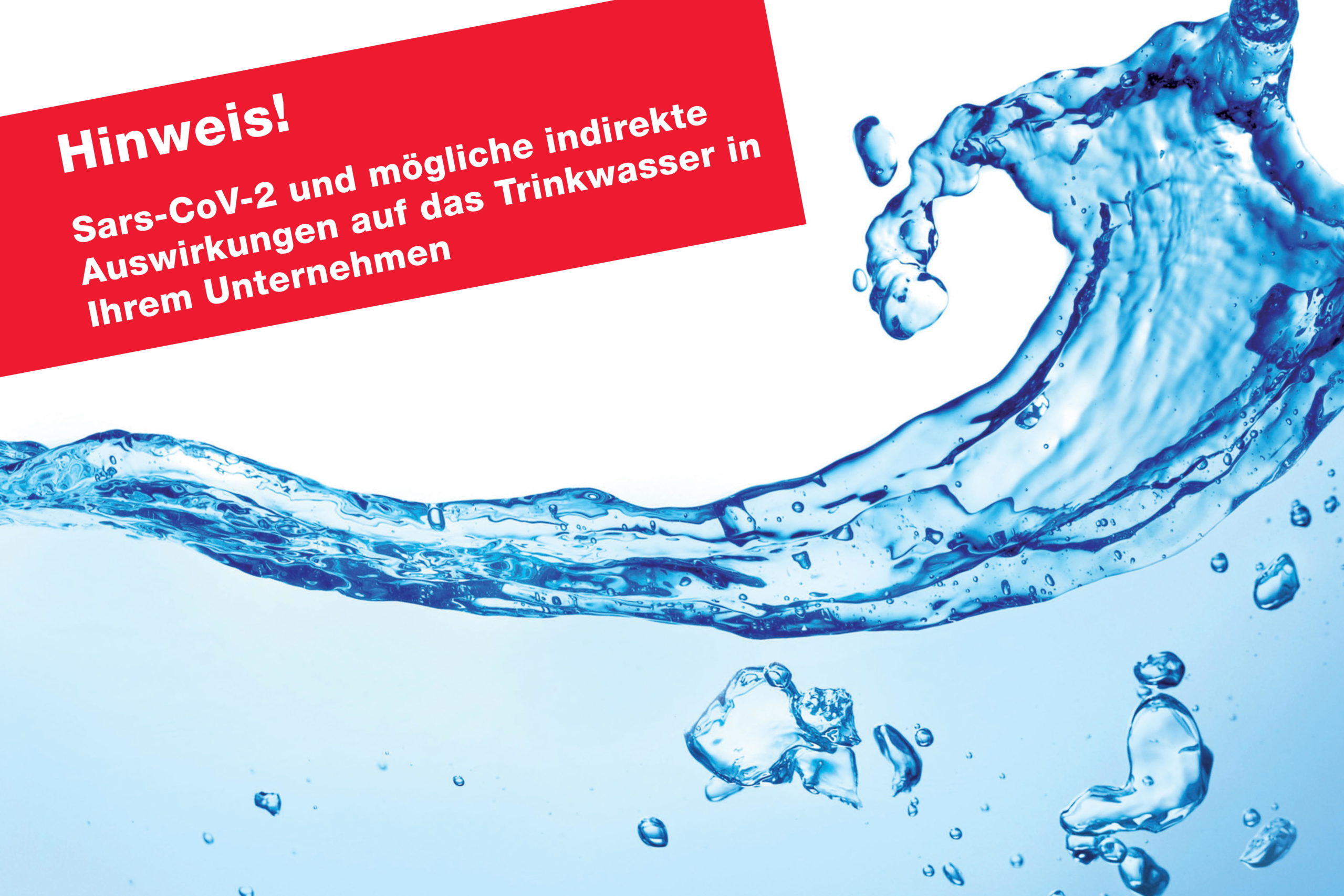The coronavirus Sars-CoV-2 is, according to the literature, not transmissible via drinking water, but nevertheless poses an indirect threat to drinking water.
The restrictive requirements of the federal and state governments for the containment of the respiratory disease Covid-19 have led or may lead to the closure or at least severe restrictions on the use of your commercially used facilities. However, the current decision made for your employees must not/should not become a boomerang about increased legionella contamination when starting work.
Because, where yesterday still a regular drinking water withdrawal took place, since today possibly no more water withdrawal is. This means that then the intended operation of the drinking water installations would no longer be possible. The regular replacement of the water pipes, which was the basis for the planning, is then no longer guaranteed in the event of an interruption in operation, which leads to stagnation conditions and thus greatly increases the risk of microbial contamination with legionella and other pathogenic germs in the drinking water.
The VDI 6023 on hygiene in drinking water installations writes about this:
“…The measures to be taken in the event of unavoidable interruptions to operations depend on the duration of the interruption (stagnation):
- In the case of drinking water installations or parts of installations where the intended operation was interrupted, the complete drinking water exchange of the installation or parts of the installation must be ensured by opening the tapping fittings when the installation is put back into operation. Note: At least allow the water to run down until the temperature remains constant.
- In the case of drinking water installations or parts of installations whose intended operation is interrupted for more than four weeks, the pipes must be shut off beforehand and flushed when the system is put back into operation, for example in accordance with the ZVSHK information sheet.
- In the case of drinking water installations or parts of installations whose intended operation is interrupted for more than six months, it is recommended to carry out microbiological control tests in accordance with TrinkwV (drinking water, hot and cold) and for legionella (drinking water, hot and cold) after the above measures have been applied. In case of microbiological contamination, measures according to DVGW W 557 must be taken. For drinking water installations, warm, additional measures according to DVGW W 551 are required.”
So what does that mean for you:
- If you have automatic rinsing devices and these are installed at all ends of the line, they have done a lot for your system and the safety of your employees. However, it must then also be ensured that the WW storage tanks are kept at the right temperature and that the circulation pumps continue to run.
- if you do not have flushing facilities, make sure that water is taken out of your system regularly (at least every 72 hours)
- If you want to switch off the domestic hot water heating, this would also be possible, but considerably more extensive measures are necessary and regulations must be observed. In this case, please contact us for a consultation.
We use all possibilities of modern communication, are there for you and fulfil all our obligations according to the current situation.
Many thanks to our customers, suppliers, subcontractors and all employees for their joint efforts in this difficult situation. We wish you the best of health and will be happy to answer your questions at any time.



